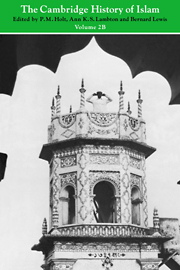
- Cited by 1
-
Cited byCrossref Citations
This Book has been cited by the following publications. This list is generated based on data provided by Crossref.
Schwartz, Kathryn A. 2009. Charting Arabic Cryptology's Evolution∗. Cryptologia, Vol. 33, Issue. 4, p. 297.
- Publisher:
- Cambridge University Press
- Online publication date:
- March 2008
- Print publication year:
- 1977
- Online ISBN:
- 9781139055055
- Subjects:
- Islam, Area Studies, South Asian History, Asian Studies, History, Religion
- Series:
- The Cambridge History of Islam


